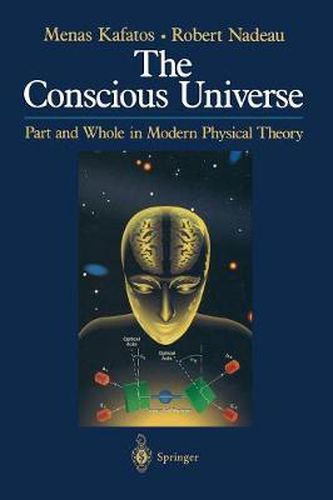Readings Newsletter
Become a Readings Member to make your shopping experience even easier.
Sign in or sign up for free!
You’re not far away from qualifying for FREE standard shipping within Australia
You’ve qualified for FREE standard shipping within Australia
The cart is loading…






This title is printed to order. This book may have been self-published. If so, we cannot guarantee the quality of the content. In the main most books will have gone through the editing process however some may not. We therefore suggest that you be aware of this before ordering this book. If in doubt check either the author or publisher’s details as we are unable to accept any returns unless they are faulty. Please contact us if you have any questions.
This discussion resulted from a dialogue which began some seven years ago between a physicist who specializes in astrophysics, general relativity, and the foundations of quantum theory, and a student of cultural history who had done post-doctoral work in the history and philosophy of science. Both of us at that time were awaiting the results of some experiments being conducted under the direction of the physicist Alain Aspect at the University of Paris-South. ! The experiments were the last in a series designed to test some predictions based on a mathematical 2 theorem published in 1964 by John Bell. There was no expectation that the results of these experiments would provide the basis for developing new technologies. The questions which the experiments were designed to answer concerned the relation ship between physical reality and physical theory in the branch of physics known as quantum mechanics. Like most questions raised by physicists which lead to startling new insights, they were disarmingly simple and direct. Is quantum physics, asked Bell, a self-consistent theory whose predictions would hold in a new class of experiments, or would the results reveal that the apparent challenges of quantum physics to the understanding in classical physics of the relationship between physical theory and physical reality were merely illusory? Answering this question in actual experiments could also, suggested Bell, lead to another, quite dramatic, result.
$9.00 standard shipping within Australia
FREE standard shipping within Australia for orders over $100.00
Express & International shipping calculated at checkout
This title is printed to order. This book may have been self-published. If so, we cannot guarantee the quality of the content. In the main most books will have gone through the editing process however some may not. We therefore suggest that you be aware of this before ordering this book. If in doubt check either the author or publisher’s details as we are unable to accept any returns unless they are faulty. Please contact us if you have any questions.
This discussion resulted from a dialogue which began some seven years ago between a physicist who specializes in astrophysics, general relativity, and the foundations of quantum theory, and a student of cultural history who had done post-doctoral work in the history and philosophy of science. Both of us at that time were awaiting the results of some experiments being conducted under the direction of the physicist Alain Aspect at the University of Paris-South. ! The experiments were the last in a series designed to test some predictions based on a mathematical 2 theorem published in 1964 by John Bell. There was no expectation that the results of these experiments would provide the basis for developing new technologies. The questions which the experiments were designed to answer concerned the relation ship between physical reality and physical theory in the branch of physics known as quantum mechanics. Like most questions raised by physicists which lead to startling new insights, they were disarmingly simple and direct. Is quantum physics, asked Bell, a self-consistent theory whose predictions would hold in a new class of experiments, or would the results reveal that the apparent challenges of quantum physics to the understanding in classical physics of the relationship between physical theory and physical reality were merely illusory? Answering this question in actual experiments could also, suggested Bell, lead to another, quite dramatic, result.